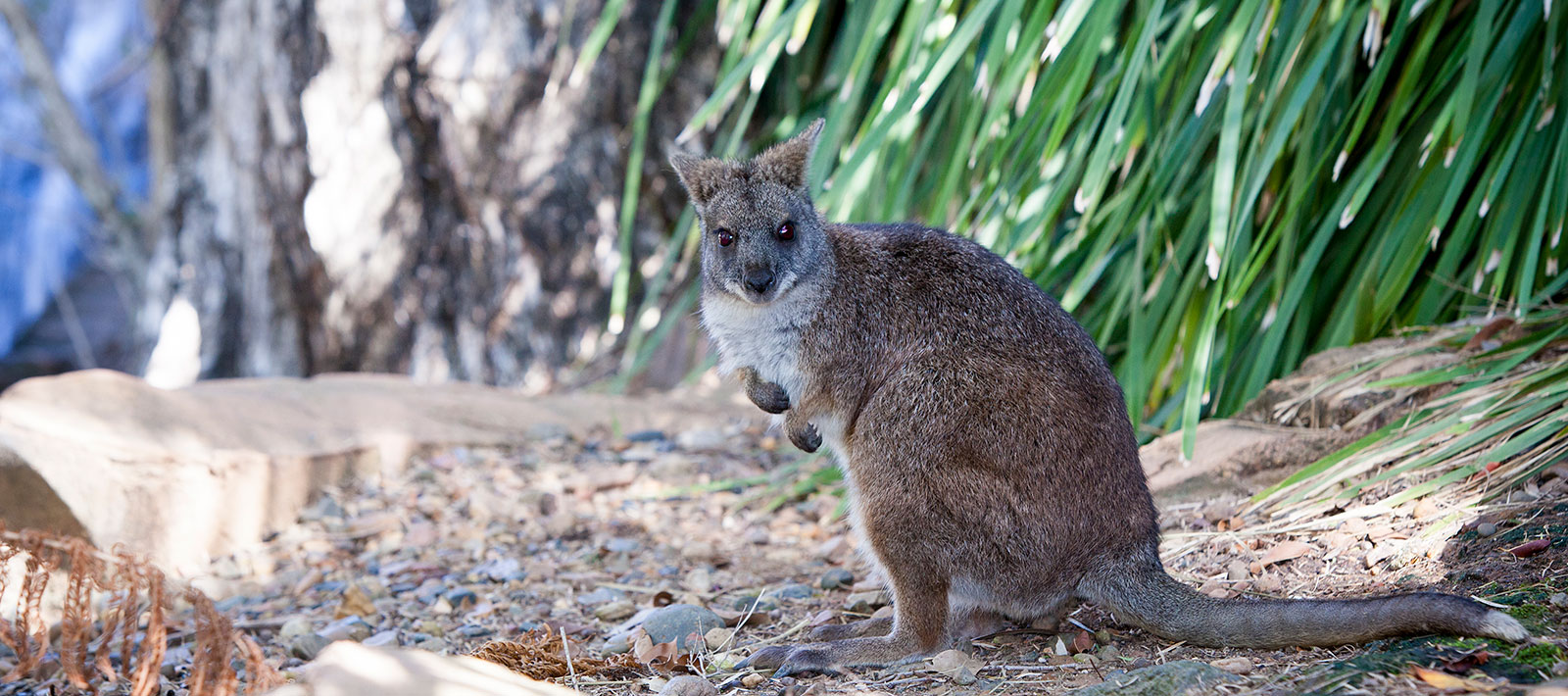Wallabies
Swamp Wallaby
Swamp wallabies, Wallabia bicolour are different from all other wallabies due to their unique teeth and lower number of chromosomes. They have a very broad premolar which is used to help them eat very coarse plant material. These animals have a very different hop to kangaroos, keeping their head down and tail straight out instead of keeping their head up.
Parma Wallaby
Parma wallabies, Macropus parma are the smallest of the kangaroo, wallaby and wallaroo species. They were discovered in 1840, but due to their shy nature they were thought to be extinct.
Red-necked wallaby
Red-necked wallabies are named due to their rusty-red shoulders and upper back. They also have a white stripe on their upper lip and a black nose and paws. These wallabies can be found in coastal scrub and sclerophyll forest (vegetation with hard leathery evergreen leaves) throughout coastal and highland eastern Australia from Bundaberg, Queensland to the South Australian border, in Tasmania and on many of the Bass Strait islands.
These animals are medium sized, standing approximately 1 metre in height, with males being larger in size than females. This species can live up to 15 years in the wild and in captivity. Red-necked wallabies are listed as ‘least concern’ as a species as they are considered common in the wild.
The term ‘macropus’, from the red-necked wallaby’s scientific name Macropus rufogriseus, comes from the Greek word ‘makros’ meaning ‘long foot. Long, narrow hind feet are a distinguishing feature of wallabies, kangaroos, and wallaroos.
Embryonic diapause
Did you know that all macropods can pause a pregnancy, meaning that the embryo remains dormant and is not implanted into the uterus? This reproductive strategy is known as embryonic diapause. This occurs when a female macropod is feeding a young joey and falls pregnant or when a female macropod falls pregnant but environmental conditions are not favourable (lack of food, cold weather). Delaying the development of the embryo in these circumstances can help to improve the survival rate of the offspring.
Did you know?
Kangaroos and wallabies are good swimmers and use their tails to help them swim.

